23.02.2024
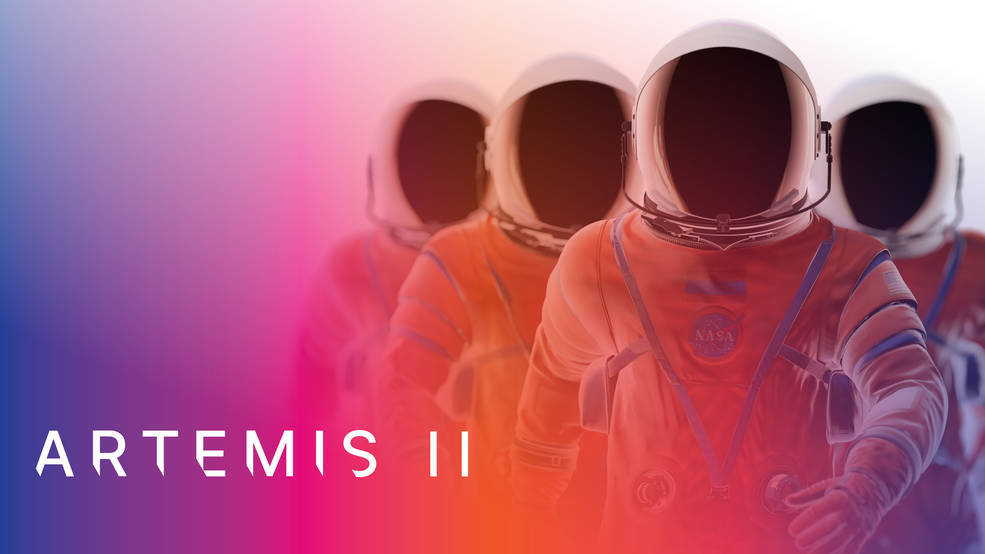
NASA brings back retro 'worm' logo for upcoming Artemis 2 moon mission (photos)
The iconic logo also returned for limited use in 2020.

The NASA "worm" logo being painted on side of an Artemis 2 solid rocket booster, at NASA's Kennedy Space Center in Florida, on Jan. 30, 2024. (Image credit: NASA/Glenn Benson)
The worm is going to the moon.
Artemis 2, the first human moon mission in 50 years, will carry the iconic NASA "worm" logo upon the solid rocket boosters helping to heft the astronauts into space, agency officials stated on Thursday (Feb. 16).
"That's no earthworm you see on SLS! The NASA worm logo is inching into place on our boosters," NASA's official account for the Space Launch System stated on X, formerly Twitter, on Thursday. Each letter of the worm is nearly 7 feet (2 meters) high and the logo is roughly 25 feet (7.5 meters) from end to end.
The curvy NASA lettering was also recently painted in a smaller form on the Orion spacecraft that will bear the four astronauts on the round-the-moon mission no earlier than September 2025 during the first crewed excursion for the spacecraft.

The NASA worm logo, as well as the European Space Agency's logo, on the Artemis 2 Orion spacecraft after installation on Jan. 28, 2024 at NASA's Kennedy Space Center in Florida. (Image credit: NASA/Rad Sinyak)
The worm logo was first used in 1975 after being designed by Danne & Blackburn, a New York-based studio who recreated the NASA wording under the U.S. Federal Design Improvement Program, according to Design Week.

The NASA worm logo pasted on the Artemis 2 solid rocket boosters at NASA's Kennedy Space Center in Florida on Jan. 30, 2024. (Image credit: NASA/Glenn Benson
Worms started crawling their way into space during the joint U.S. and Russian Apollo-Soyuz Test Project in 1975, continuing to inch their way into orbit during the space shuttle and Hubble Space Telescope launching era.
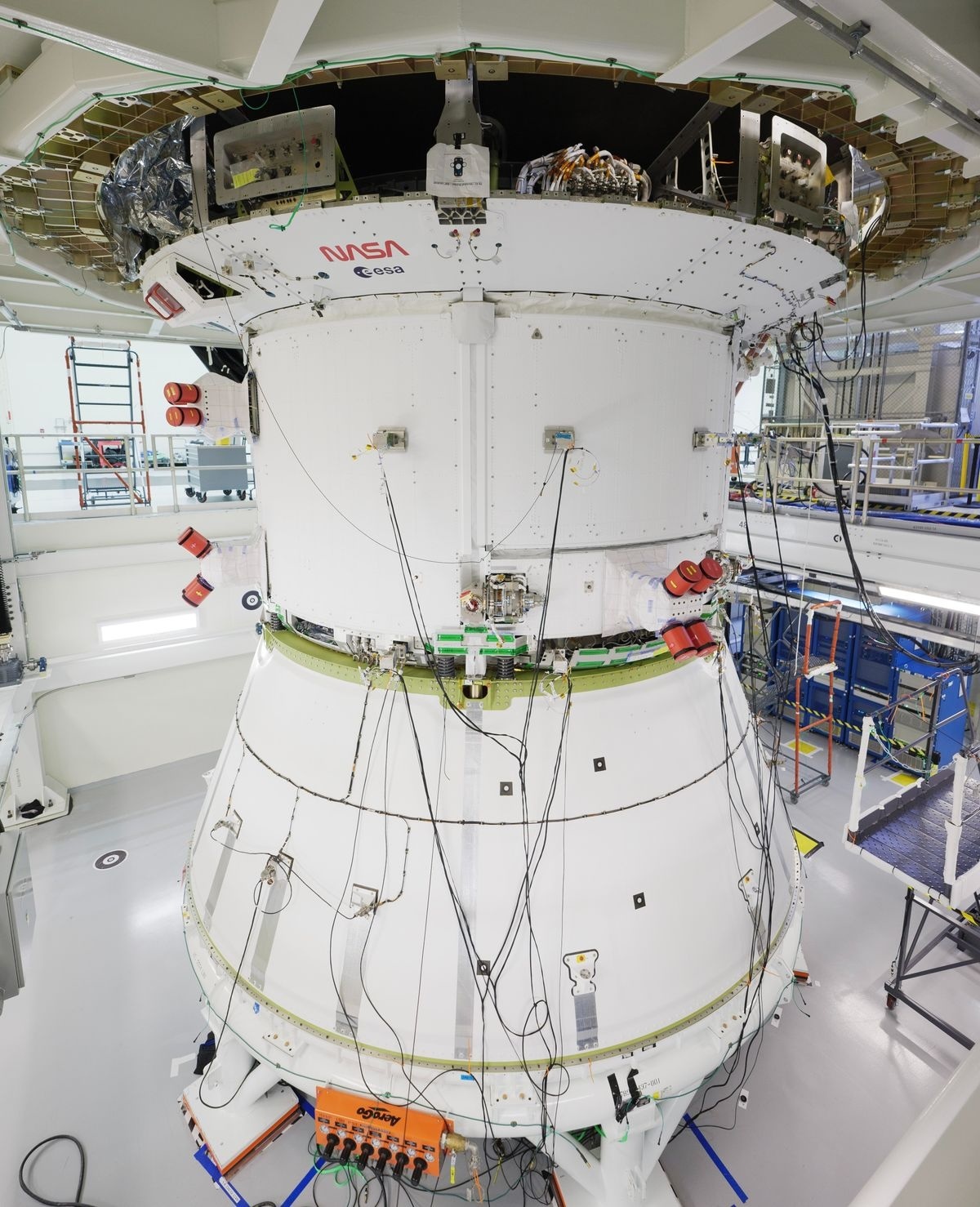
In 1992, however, then NASA-administrator Dan Goldin retired the worm logo in favor of a "meatball" version to invoke the "glory days" of Apollo, according to agency materials. But the worm made a comeback for limited mission opportunities in 2020, starting with the first SpaceX mission with astronauts on board, under the approval of then-administrator Jim Bridenstine.
"I grew up with the worm as the logo of NASA. It is kind of personal to me," Bridenstine told Space.com partner collectSPACE in 2020. "This is NASA."
Work on the Artemis 2 hardware at NASA's Kennedy Space Center, as well as other locations, continues. The mission was recently delayed nine months to September 2025 due to several technical issues. Delayed too was Artemis 3, now slated for 2026 instead of 2025.
"It takes courage to make the right decision," Artemis 2 astronaut Jeremy Hansen, a mission specialist with the Canadian Space Agency, told Space.com in exclusive interview this month. "In this case," he added, "this one was very clearly the right decision. There are concrete things that we know we will use this time for."
The mission includes NASA commander Reid Wiseman, NASA pilot Victor Glover (who will become the first Black person to leave low Earth orbit, or LEO), NASA mission specialist Christina Koch (the first woman to go beyond LEO) and Hansen (the first non-American).
NASA, Canada and more than 30 other countries have signed up for a set of peaceful space exploration norms under the U.S.-led Artemis Accords. A subset of those countries, like Canada and certain members of the European Space Agency, have committed also to contributing hardware for the Artemis program's moon aims.
Quelle: SC
----
Update: 28.02.2024
.
Artemis II Crew, Recovery Teams Train for Final Phase of Moon Mission
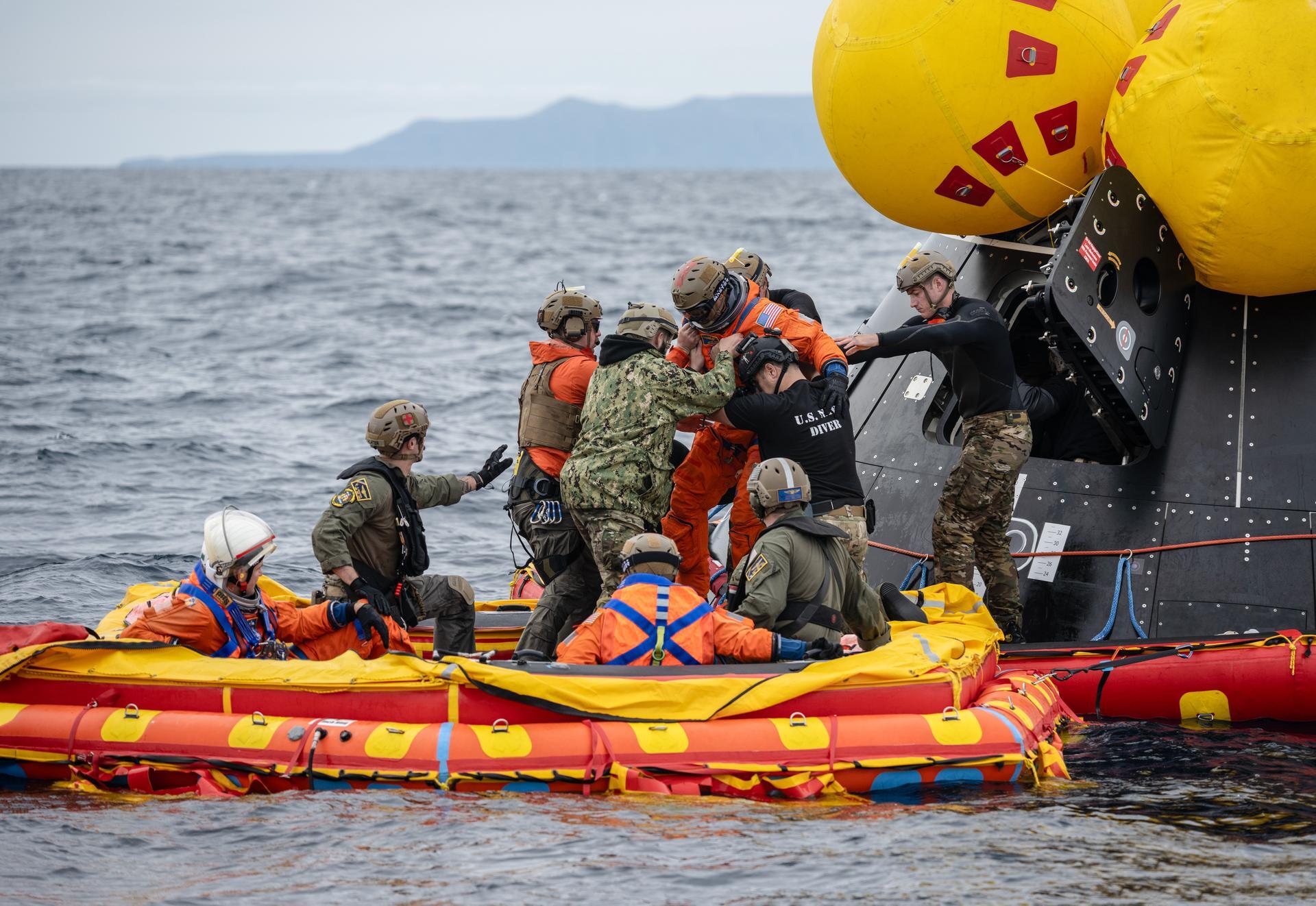
Credit: NASA/Kenny Allen
NASA astronaut and Artemis II pilot Victor Glover is assisted by U.S. Navy personnel as he exits a mockup of the Orion spacecraft in the Pacific Ocean during training Feb. 25, while his crewmates look on. The Artemis II crew and a team from NASA and the Department of Defense are spending several days at sea to test the procedures and tools that will be used to help the crew to safety when they splash down in the ocean at the end of their 10-day, 685,000-mile journey around the Moon next year as part of the first crewed mission under NASA’s Artemis campaign.
On the day of the crew’s return to Earth, a Navy ship with specially trained personnel will await splashdown and then approach the Orion capsule to help extract the four astronauts. An inflatable raft, called the front porch, will provide a place for them to rest when they exit the capsule before they are then individually hoisted by helicopters and flown to the waiting ship.
Artemis II, launching atop the SLS (Space Launch System) rocket from NASA’s Kennedy Space Center in Florida, will test the Orion spacecraft’s life support systems needed for future lunar missions.
Quelle: NASA
----
Update: 1.03.2024
.
Splashdown 101: Joint Team to Recover Crew, Orion After Moon Missions

When Artemis II NASA astronauts Reid Wiseman, Victor Glover, Christina Koch, and CSA (Canadian Space Agency) astronaut Jeremy Hansen return to Earth after a nearly 10-day mission around the Moon, a joint NASA and Department of Defense team led by NASA’s Exploration Ground Systems Program will be ready to retrieve them from the Orion spacecraft and ferry them onto a naval ship in the Pacific Ocean.
As Orion enters Earth’s atmosphere, the capsule will keep the crew safe as it slows from nearly 25,000 mph to about 300 mph, when its system of 11 parachutes will deploy in a precise sequence to help slow the capsule and crew to a relatively gentle 20 mph for splashdown about 60 miles off the coast of California, weather permitting.
Prior to splashdown, a team from NASA’s Johnson Space Center in Houston, called Sasquatch, will map where elements jettisoned from Orion such as the forward bay cover, drogue parachutes, and mortars, will land in the Ocean so the boats and helicopters supporting recovery stay clear of those areas.
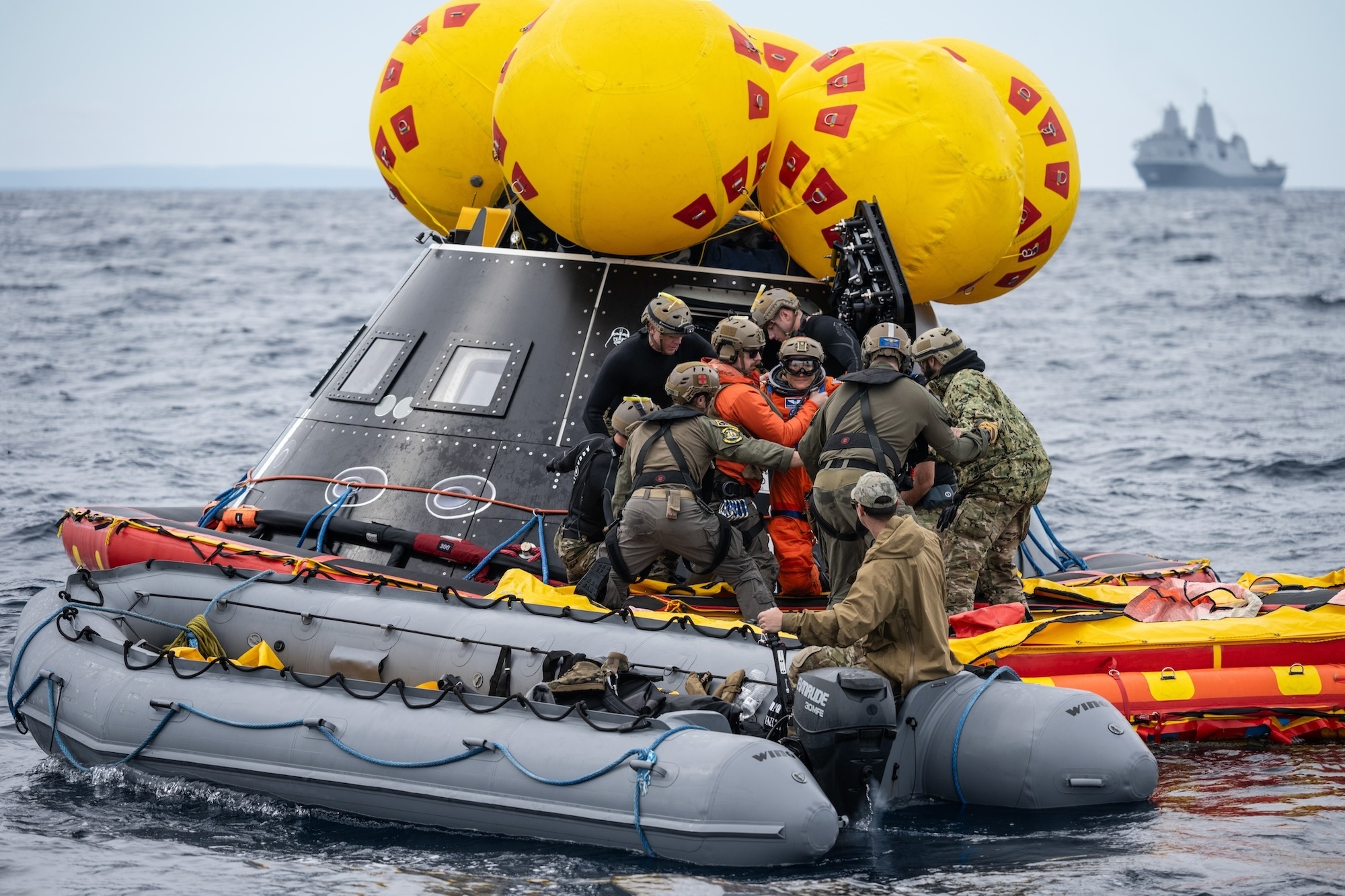
Once it is safe to approach the capsule, helicopters, and a team of Navy divers in small boats, along with NASA’s open water lead, will begin making their way to the capsule. The Navy divers then will assess the environment surrounding the capsule to make sure there are no hazards present.
Teams will stabilize Orion before the crew exits the capsule in the open water by installing an inflatable collar. To safely retrieve the astronauts, the divers also will install an inflatable raft, called the front porch, under Orion’s side hatch to aid in astronaut retrieval from the capsule.
“Our highly choreographed recovery operations will help ensure the final phase of NASA’s first crewed mission to the Moon in more than 50 years ends as a success,” said Lili Villareal, NASA’s landing and recovery director.
When all four crew members are out of the capsule, the front porch is repositioned about 100 yards from Orion to allow the astronauts to be individually lifted into a helicopter and returned to the ship. Two helicopters will be deployed to retrieve the crew. The helicopters will each retrieve two crewmembers and deliver them to the deck of the naval ship.
Once on the ship, the astronauts will be transported to a medical bay for a post-mission evaluation before flying on a helicopter from the ship back to shore and then to Johnson. Teams expect to recover the crew and deliver them to the medical bay within two hours of splashdown. If the crew returns to Earth at night, teams expect the recovery activities to take a bit longer but still must meet a requirement to have the crew in the medical bay within two hours.
With the crew safely out of the capsule, teams will work on towing Orion into the well deck of the ship, using procedures similar to those used during Artemis I. Navy divers will secure a system of lines to the capsule via several connection points on a collar to help tow Orion inside the ship.
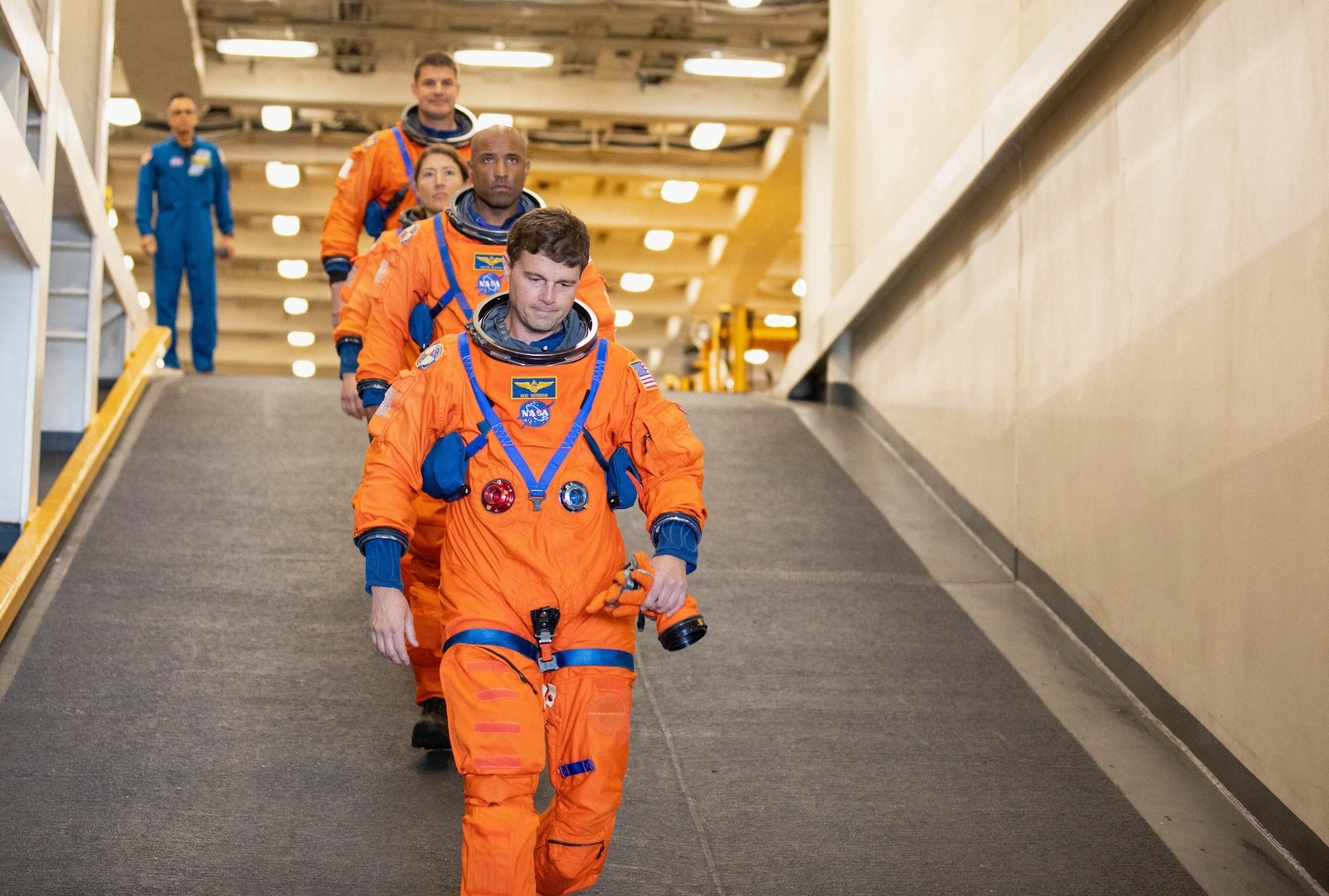
When Orion is close to the vessel, an additional line attached to a pneumatic winch will be affixed to the capsule by the divers. These ropes all work together to ensure the capsule is stable as it is slowly pulled inside the ship. A team of sailors and NASA recovery personnel inside the ship will begin manually pulling some of the lines to help align Orion with the stand it will be placed on once back on the ship.
As the sailors are pulling on the lines, NASA technicians will operate a main winch line attached to the capsule to help bring Orion inside making for a safe and precise recovery. After Orion is on a stand, the well deck will be drained of water and the ship will begin making its way back to Naval Base San Diego. Under NASA’s Artemis campaign, the agency will establish the foundation for long-term scientific exploration at the Moon, land the first woman, first person of color, and its first international partner astronaut on the lunar surface, and prepare for human expeditions to Mars for the benefit of all.
Quelle: NASA
----
Update: 4.03.2024
.
NASA studying issues with Orion hatch design
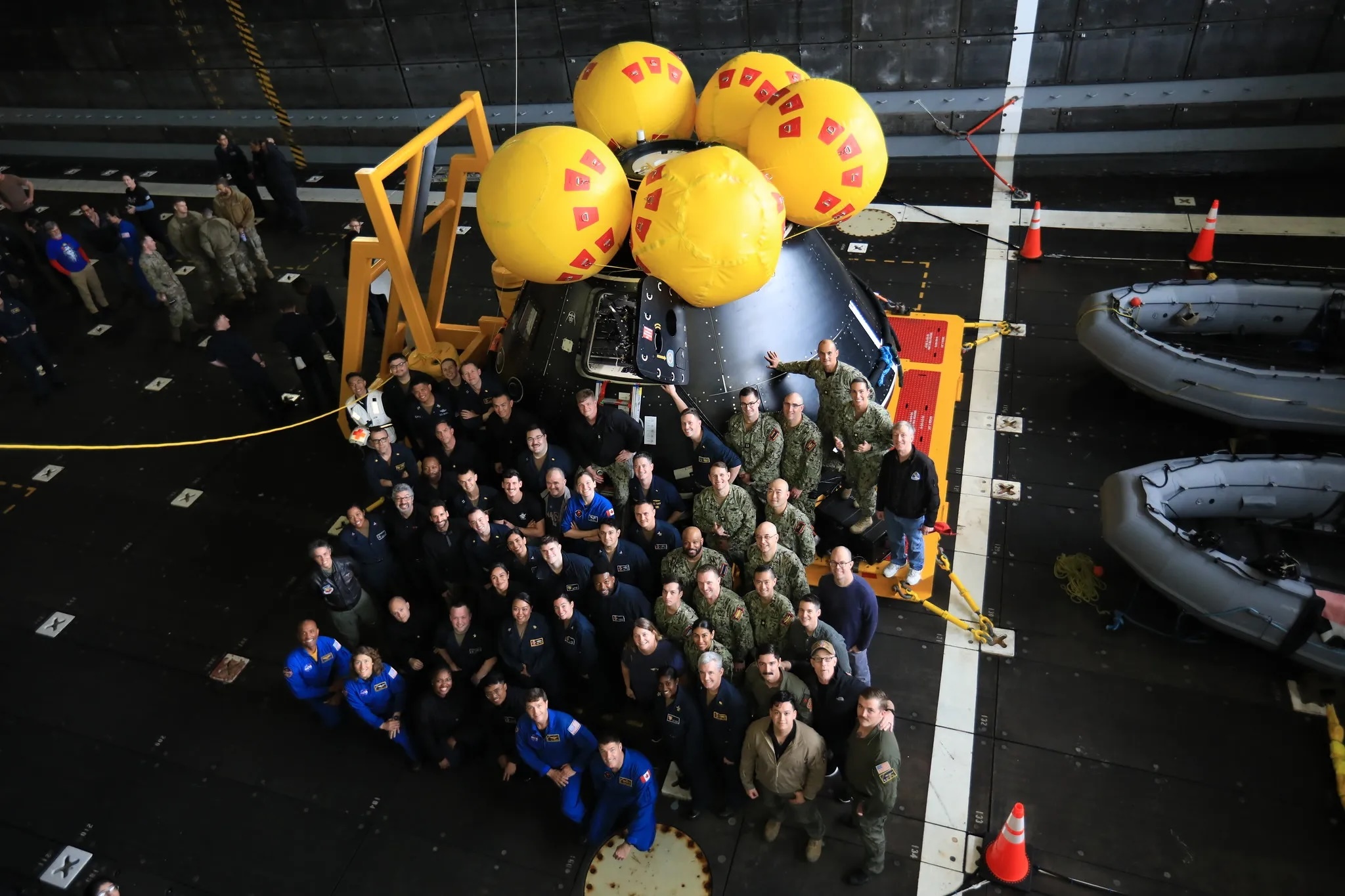
An Orion capsule mockup during recent recovery tests. The design of the side hatch, open in the image, has been an issue a NASA safety panel is tracking. Credit: NASA/Isaac Watson Credit: NASA/Isaac Watson
WASHINGTON — A NASA safety panel says the agency is studying issues with the design of the side hatch of the Orion spacecraft that could affect its ability to be opened in an off-nominal situation.
During a Feb. 28 public meeting of the Aerospace Safety Advisory Panel (ASAP), members said NASA has been looking at “a number of issues” with the Orion side hatch over the last six to nine months.
William Bray, the ASAP member who discussed the status of NASA’s exploration programs at the briefing, did not go into specifics about the hatch issue, only that it could affect “contingency operations” on the launch pad or after splashdown.
“NASA has been investigating a number of issues associated with the side hatch design, probably over the last six to nine months,” he said. “It’s really specifically an area where it could affect or impact crew ability to open the hatch in a contingency operation either on the launch pad at launch or landing on return to Earth.”
He noted the astronaut office had been involved with the issue. “Their nights will be invaluable to any resolution for design fixes or concept of ops changes,” he said. “Still more work to be done.”
He didn’t further describe the hatch issue. ASAP, in its annual report released in January, makes a passing reference to a “delta-pressure capability” issue with the hatch, noting that the program “is also conducting side hatch delta-pressure testing that should help define the system’s limits and operational and contingency operations procedure.”
NASA spokesperson Rachel Kraft told SpaceNews March 1 that there was a need for additional analysis on the performance of hinges in the side hatch. “The ASAP requested a status on the design of Orion’s side hatch regarding requirements for pressure changes in normal and emergency scenarios to ensure the hatch can safely open in all cases either by recovery personnel or by the crew themselves, if necessary,” she said.
“Full-scale testing is underway to verify the capability and develop operations required to ensure the hatch can be opened in a variety of different potential pressure scenarios,” she added.
The hatch issue was one of two with Orion mentioned at the ASAP meeting. The other is the ongoing study of greater-than-expected erosion of heat shield “char” material during Orion’s reentry on the Artemis 1 uncrewed mission in December 2022. That issue was one of three with Orion that NASA cited in January as reasons for delaying Artemis 2, the first crewed Orion mission, from late 2024 to no earlier than September 2025.
“From our view, we see the team very close to getting to the root cause understanding of the char loss,” Bray said. The key factors, he explained, involve the density of heat shield and coating material composition, as well as “associated permeability and porosity characteristics” of those materials.
He said NASA expected to complete the heat shield investigation “in the next month or coming months” that could have implications for Artemis 2 and later missions. “It will inform decisions on the reentry trajectory, particularly for Artemis 2, and also may have some long-term solutions relative to the heat shield beyond Artemis 2 into the Artemis 3 missions and beyond.”
For both the heat shield and hatch issues, he concluded, “we don’t see any showstoppers at this time relative to that” for Artemis 2.
Quelle: SN
----
Update: 13.04.2024
.
Altitude Chamber Gets Upgrade for Artemis II, Spacecraft Testing Begins
Before the Orion spacecraft is stacked atop NASA’s powerful SLS (Space Launch System) rocket ahead of the Artemis II mission, engineers will put it through a series of rigorous tests to ensure it is ready for lunar flight. In preparation for testing, teams at the agency’s Kennedy Space Center in Florida have made significant upgrades to the altitude chamber where testing will occur.
Several of the tests take place inside one of two altitude chambers in the high bay of the Neil A. Armstrong Operations and Checkout (O&C) Building at Kennedy. These tests, which began on April 10, include checking out electromagnetic interference and electromagnetic compatibility, which demonstrate the capability of the spacecraft when subjected to internally and externally generated electromagnetic energy and verify that all systems perform as they would during the mission.
To prepare for the tests, the west altitude chamber was upgraded to test the spacecraft in a vacuum environment that simulates an altitude of up to 250,000 feet. These upgrades re-activated altitude chamber testing capabilities for the Orion spacecraft at Kennedy. Previous vacuum testing on the Orion spacecraft for Artemis I took place at NASA’s Glenn Research Center in Ohio. Teams also installed a 30-ton crane in the O&C to lift and lower the Orion crew and service module stack into the chamber, lift and lower the chamber’s lid, and move the spacecraft across the high bay.
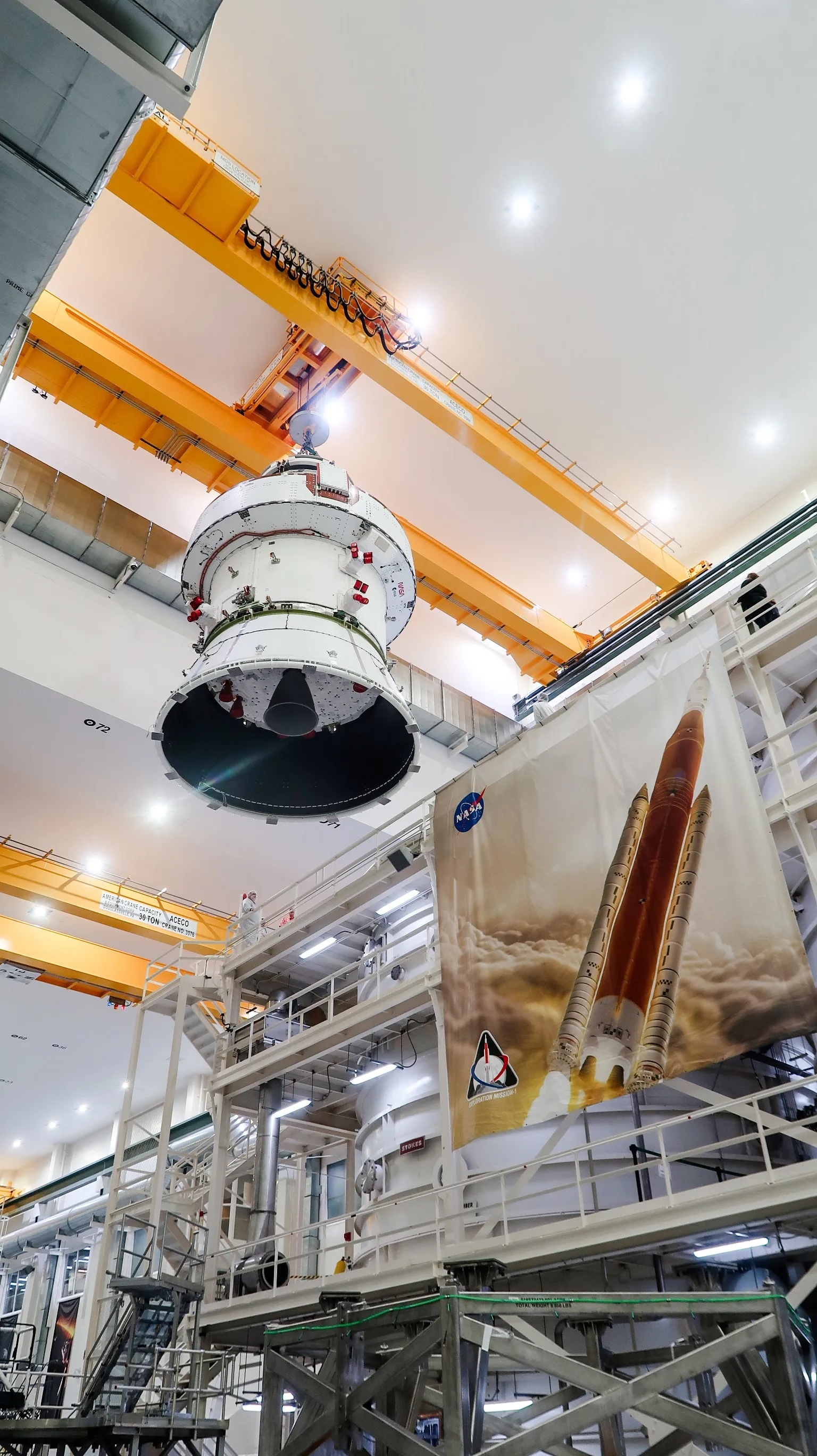
On Thursday, April 4, teams loaded the Artemis II spacecraft into the altitude chamber. This event marks the first time, since the Apollo testing, that a spacecraft designed for human exploration of space has entered the chamber for testing. After testing is complete, the spacecraft will return to the Final Assembly and Systems Testing, or FAST, cell in the O&C for further work. Later this summer, teams will lift Orion back into the altitude chamber to conduct a test that simulates as close as possible the conditions in the vacuum of deep space.
Originally used to test environmental and life support systems on the lunar and command modules during the Apollo Program, the interior of each altitude chamber measures 33 feet in diameter and 44 feet high and was designed to simulate the vacuum equivalent of up to 200,000 feet in a deep space environment. Both chambers were rated for astronaut crews to operate flight systems during tests.
After Apollo, the chambers were used for leak tests on pressurized modules delivered by the Shuttle program for the International Space Station.
Additional upgrades to the west chamber include a new oxygen deficiency monitoring system that provides real-time monitoring of the oxygen levels and a new airflow system. New LED lights replaced the previous lighting system, and equipment from the Apollo days was removed. A pressure control system was added to the chamber that provides precise control of pressure levels. Two new pumps remove the air from the chamber to create a vacuum. New guardrails and service platforms replaced the older platforms inside the chamber.
A new control room overlooks the upgraded chamber. It contains several workstations and communication equipment. The chamber control and monitoring system was upgraded to handle operation of all the remotely controlled hardware and subsystems that make up the vacuum testing capability.
“It was an amazing opportunity to lead a diverse and exceptional team to re-activate a capability for testing the NASA’s next generation spacecraft that will carry humans back to the Moon,” said Marie Reed, West Altitude Chamber Reactivation Project Manager. “The team of more than 70 aerospace professionals, included individuals from NASA, Lockheed Martin, Artic Slope Research Corps, Jacobs Engineering, and every discipline area imaginable. This project required long hours of dedication and exceptional coordination to enable the successful turn-around and activation in time for this Artemis II spacecraft testing.”

NASA’s Artemis II mission will carry four astronauts aboard the agency’s Orion spacecraft on an approximately 10-day test flight around the Moon and back to Earth, the first crewed flight under Artemis that will test Orion’s life support systems ahead of future missions. Under the Artemis campaign, NASA will return humanity to the lunar surface, this time sending humans to explore the lunar South Pole region.
For time lapse footage of the Artemis II lift into the vacuum chamber visit: Artemis II Orion Vac Chamber Lift and Load Operations
Quelle: NASA
